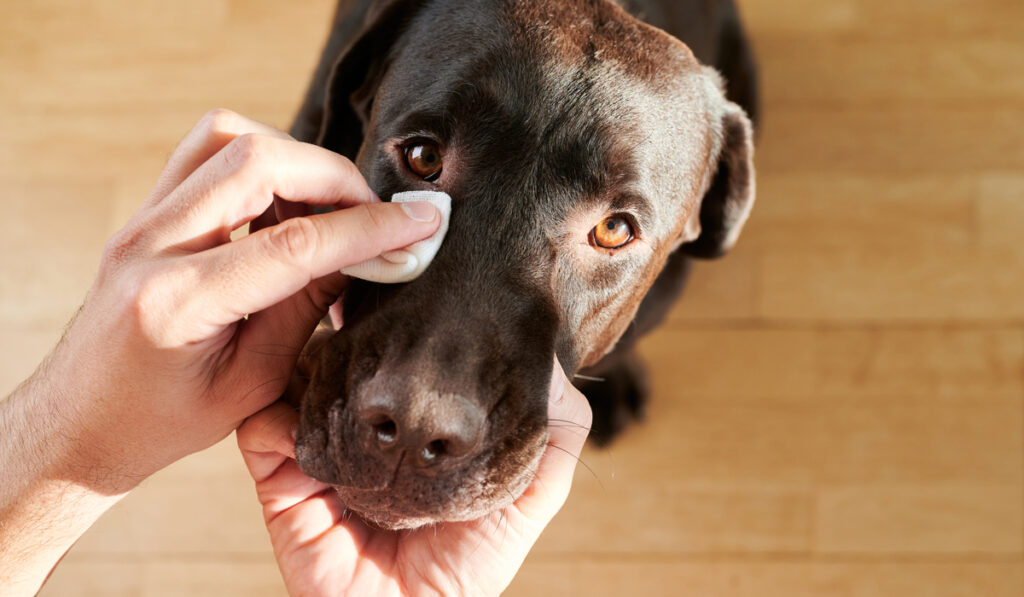Dogs do get allergies? Yes. Allergies can affect any dog. They’re also tough to pin down. After all, you don’t want to jump to conclusions just because your dog is shaking his head a lot like he’s trying to clear his ears.
But it IS something to notice. Your dog’s ears might be irritated by certain allergens, after all.
There’s also something that can look like an allergy, but veterinarians classify it as an “intolerance.” In either case, your dog can suffer.
You might wonder about the typical symptoms of a dog allergy or intolerance and what causes them. Do dogs get allergies to pollen? Do dogs get allergies to food? What is my dog allergic to? Are certain dog breeds more susceptible to allergies than others?
These are excellent questions.
It turns out, dogs can have allergies just like people. Some dogs have food allergies to wheat or even chicken. Some have environmental allergies or seasonal allergies to certain grasses during specific times of the year.
But that’s not all: they can also be allergic to flea saliva or something in the carpet like dust mites.
In other words, like people, pups can be allergic to all manner of things. Usually, the symptoms of allergies show up as skin or tummy troubles.
Let’s take a closer look at some common symptoms of dog allergies and why they cause the problems.
3 Common Symptoms of Dog Allergies

Knowing the common allergy symptoms is the first step toward helping your dog get some relief. If your dog shows any of the below signs of skin or tummy troubles, talk to your vet to investigate further.
Depending on the cause and severity, allergy testing and allergy shots (aka immunotherapy) may be required, depending on the type of allergy. Your vet might also refer you to a specialist or veterinary dermatologist for skin testing.
1. Excessive scratching and chewing

Frequent paw chewing or scratching, to the point of hair loss and red, raw skin are common symptoms of dog allergies. In this case, the itchiness of the affected area is too much for your dog to ignore.
Common areas of your dog’s skin allergic dogs will lick and chew include paws, legs, and back.
2. Gastro-intestinal (GI) and bum problems

Common signs of dreaded tummy issues can cause your dog to either have diarrhea, vomit, or both frequently. Scooting when your dog’s butt is itchy is another sign of a food allergy.
If it is a food allergy, you might want to look into your dog’s diet and consider an elimination diet to find out what specific ingredient they are allergic to.
3. Runny eyes or head shaking

Red and watery eyes, a constantly runny nose, sneezing, or ear problems are other common symptoms of dog allergies. For example, you might see your dog shaking his head a lot like he’s trying to clear his ears. This could be allergies or it could be an ear infection.
Do any of these symptoms sound familiar? If your dog does any or all of them on a frequent basis, then you’ll want to make a veterinarian appointment to have your dog evaluated.
Do dogs get allergies from fleas?
According to Dr. Scott Miller from the University of Illinois College of Veterinary Medicine, flea allergy is the most common allergy affecting dogs.
Flea allergy dermatitis (FAD) makes dogs very itchy and is caused by the saliva injected when a flea bites. Common signs of flea allergy include irritated skin, hair loss, and excessive itching.
Prevention is key to avoiding skin allergies brought on by fleas. Pet owners must be diligent by giving their dog a flea and tick preventative on a regular basis.
What’s an allergic reaction, anyway?

It’s an odd thing, an allergic reaction. At the core, it’s an immune system imbalance.
It’s the immune system’s job to fight dangerous “invaders” via an immune response. Sometimes it mistakes everyday environmental allergens like wheat or dust/dust mites as such an invader.
Here’s an example, let’s say your dog gets itchy skin when he eats foods with wheat. What’s happening is his body interprets the presence of wheat as a danger and attacks it with antibodies.
It’s a miscommunication.
Typical symptoms of dog allergies and intolerances can show up as frequent paw chewing or tummy troubles. Long term, it can lead to chronic inflammation which is related to serious illnesses.
What to do about dog allergies

Changing your dog’s food may help and is often one of the first things people do when they suspect an allergy or food intolerance. You can switch to a dog food without chicken or wheat, for example, and try single-ingredient treats like these sweet potato fries.
If you do make food changes, take note of any changes in your dog’s allergies. It’s a good idea to write down the dates you made the changes and any appearance or behavior changes over the next few weeks in the notes app on your phone. That way, you can discuss it with your DVM on your next visit.
However, if you try this tactic, know that it can take a few weeks to clear up because the ingredient is still in your pet’s body for up to a month.
Allergy medication

To keep a dog suffering from allergies from gnawing the affected area raw (and potentially causing a bacterial infection), many vets say it’s OK to give them an antihistamine like Benadryl. Just be sure to talk to your vet before giving them any human medicine for proper dosage instructions and to learn about possible side effects.
Apoquel is another common allergy medication prescribed by DVMs,
For many people, alleviating symptoms of dog allergies can be a simple matter of switching out their dog’s food or giving them a bath with a medicated shampoo. Other times, it’s not so easy.
Allergies and intolerances are famous for being tough to nail down. But with patience and awareness, you can help your dog look and feel better.
Does your dog show symptoms of dog allergies? What do you do to give them relief?
Editor’s note: This post has been updated as of April 2022 to provide the most pup-to-date information.

